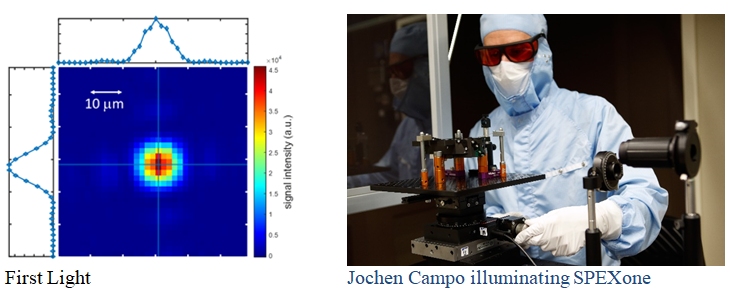Aerosol space instrument SPEXone sees first light
Leiden, 11-03-2020 – SPEXone, the Dutch instrument onboard NASA’s PACE mission, has reached its ‘First Light’ milestone. Airbus DS NL and SRON develop SPEXone to analyse aerosols in our atmosphere.
First Light marks a small step towards a fully functional instrument, but an important one. To reach this milestone in the development trajectory of SPEXone, the engineers pointed a light source at the detector and managed to obtain the first sharp image. This is not trivial, because a number of mirrors have to be aligned accurately, with a sideways error margin of 20 micrometer (width of a human hair) and a rotation error margin of 20 arcseconds (1% of a full moon). This is necessary to get the light beam through very small openings without any light coming in from other directions. The results are promising; the image shows a sharp and bright spot of 10 micrometer wide. The next step will be adding the spectrometer – a complex prism – and produce a rainbow.
SPEXone is a compact optical instrument to characterise aerosols in the Earth’s atmosphere from low Earth orbit. It is part of the NASA PACE mission (to be launched in 2023), as a partnered payload. SPEXone is developed in a partnership between SRON Netherlands Institute for Space Research and Airbus Netherlands. TNO provided support for optical aspects of the design, and the manufacturing of the free-form mirrors.


Share